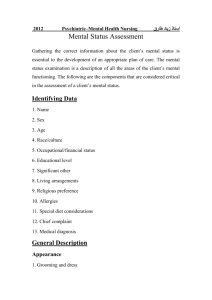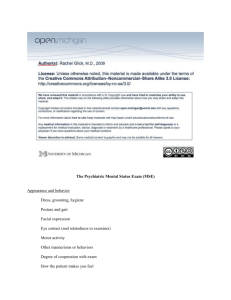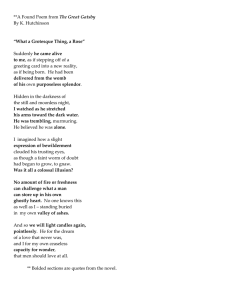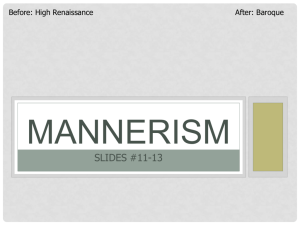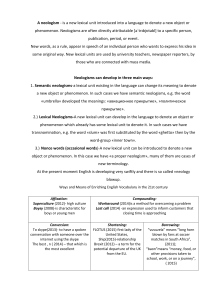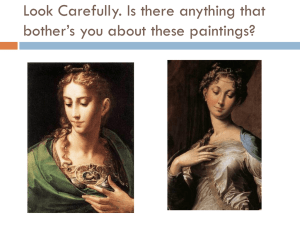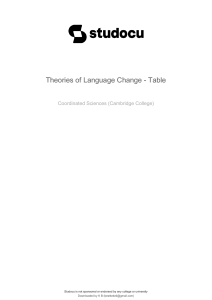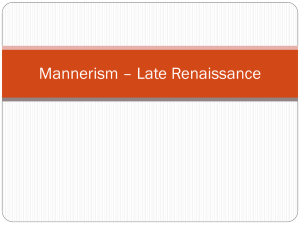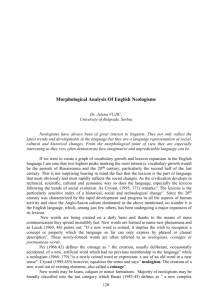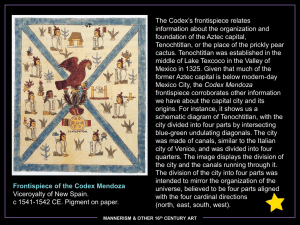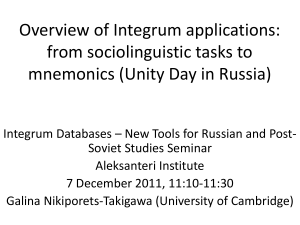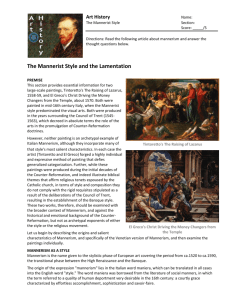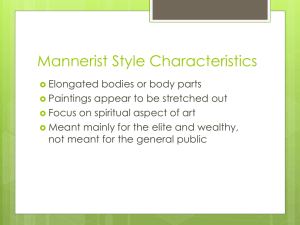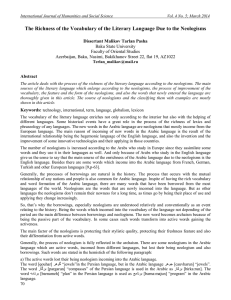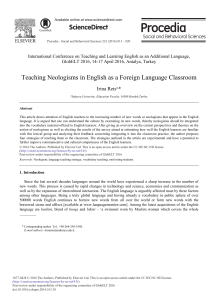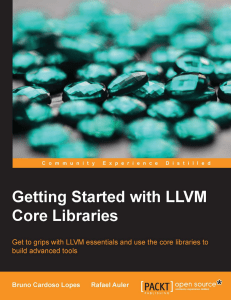Outline of the Mental Status Examination
advertisement
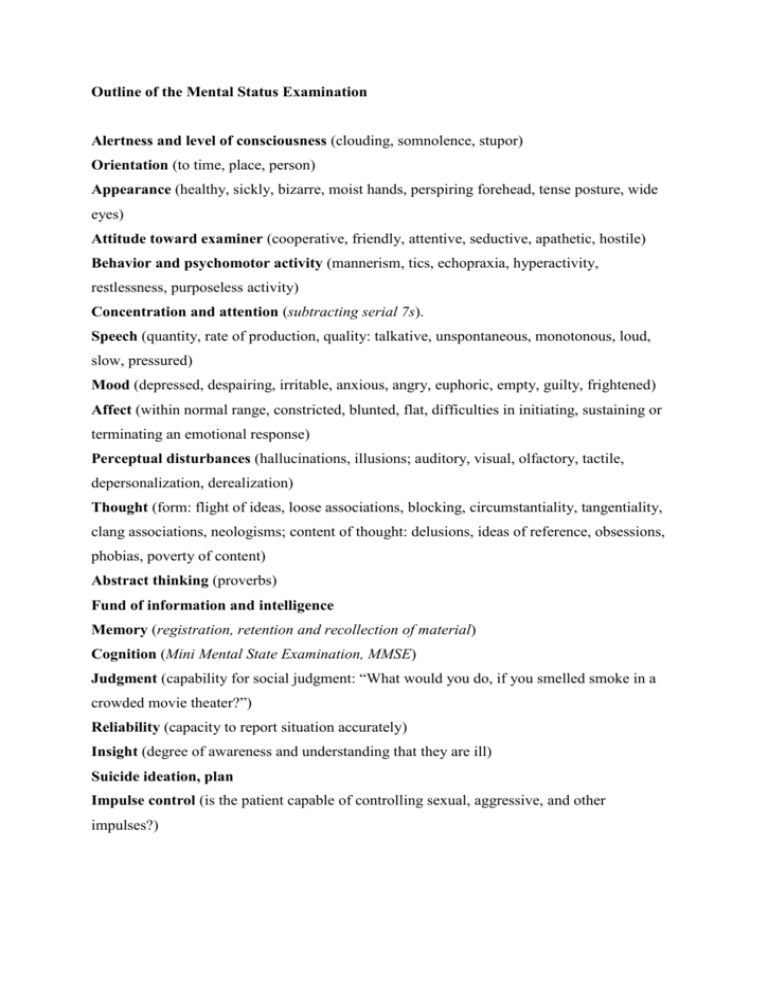
Outline of the Mental Status Examination Alertness and level of consciousness (clouding, somnolence, stupor) Orientation (to time, place, person) Appearance (healthy, sickly, bizarre, moist hands, perspiring forehead, tense posture, wide eyes) Attitude toward examiner (cooperative, friendly, attentive, seductive, apathetic, hostile) Behavior and psychomotor activity (mannerism, tics, echopraxia, hyperactivity, restlessness, purposeless activity) Concentration and attention (subtracting serial 7s). Speech (quantity, rate of production, quality: talkative, unspontaneous, monotonous, loud, slow, pressured) Mood (depressed, despairing, irritable, anxious, angry, euphoric, empty, guilty, frightened) Affect (within normal range, constricted, blunted, flat, difficulties in initiating, sustaining or terminating an emotional response) Perceptual disturbances (hallucinations, illusions; auditory, visual, olfactory, tactile, depersonalization, derealization) Thought (form: flight of ideas, loose associations, blocking, circumstantiality, tangentiality, clang associations, neologisms; content of thought: delusions, ideas of reference, obsessions, phobias, poverty of content) Abstract thinking (proverbs) Fund of information and intelligence Memory (registration, retention and recollection of material) Cognition (Mini Mental State Examination, MMSE) Judgment (capability for social judgment: “What would you do, if you smelled smoke in a crowded movie theater?”) Reliability (capacity to report situation accurately) Insight (degree of awareness and understanding that they are ill) Suicide ideation, plan Impulse control (is the patient capable of controlling sexual, aggressive, and other impulses?)
